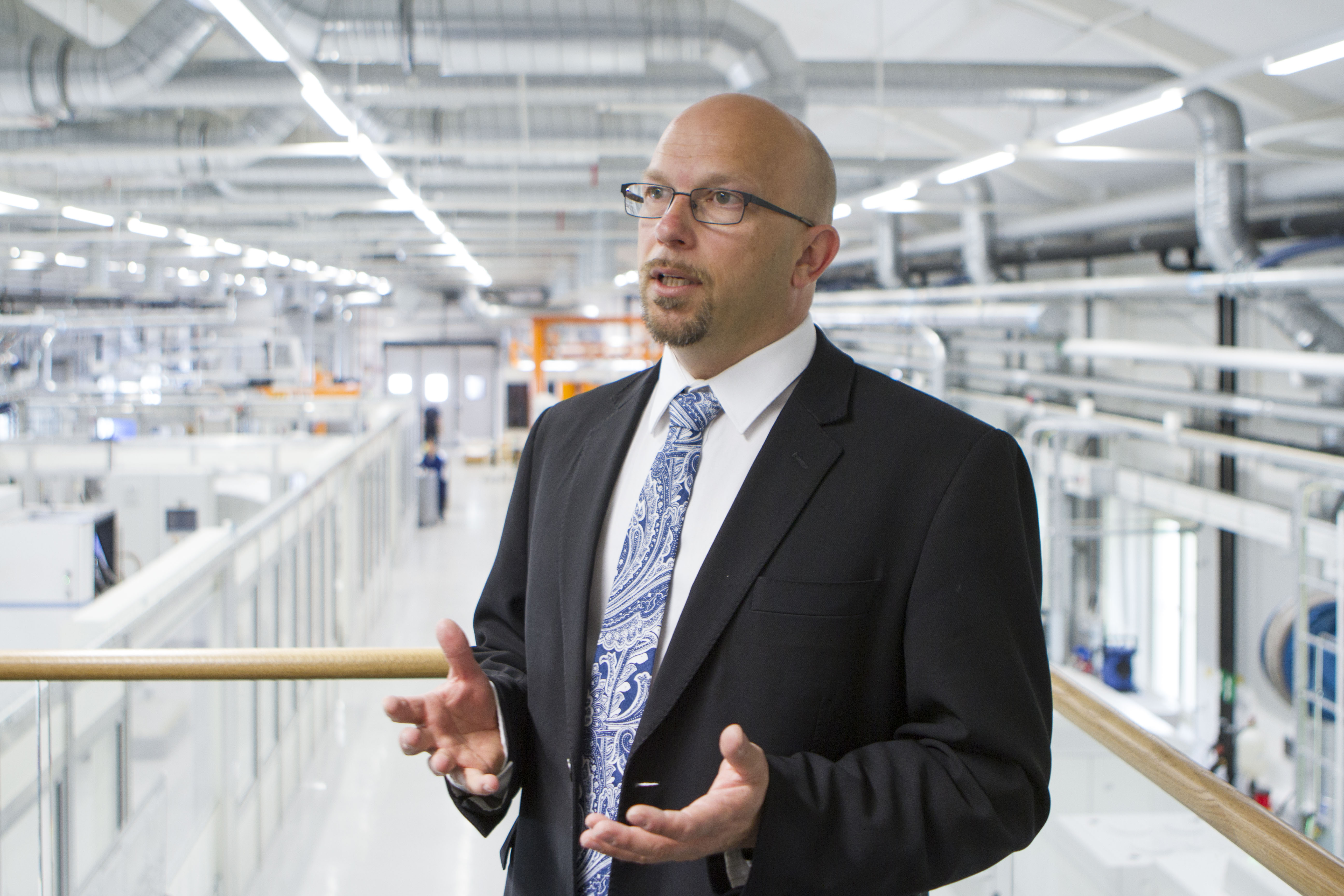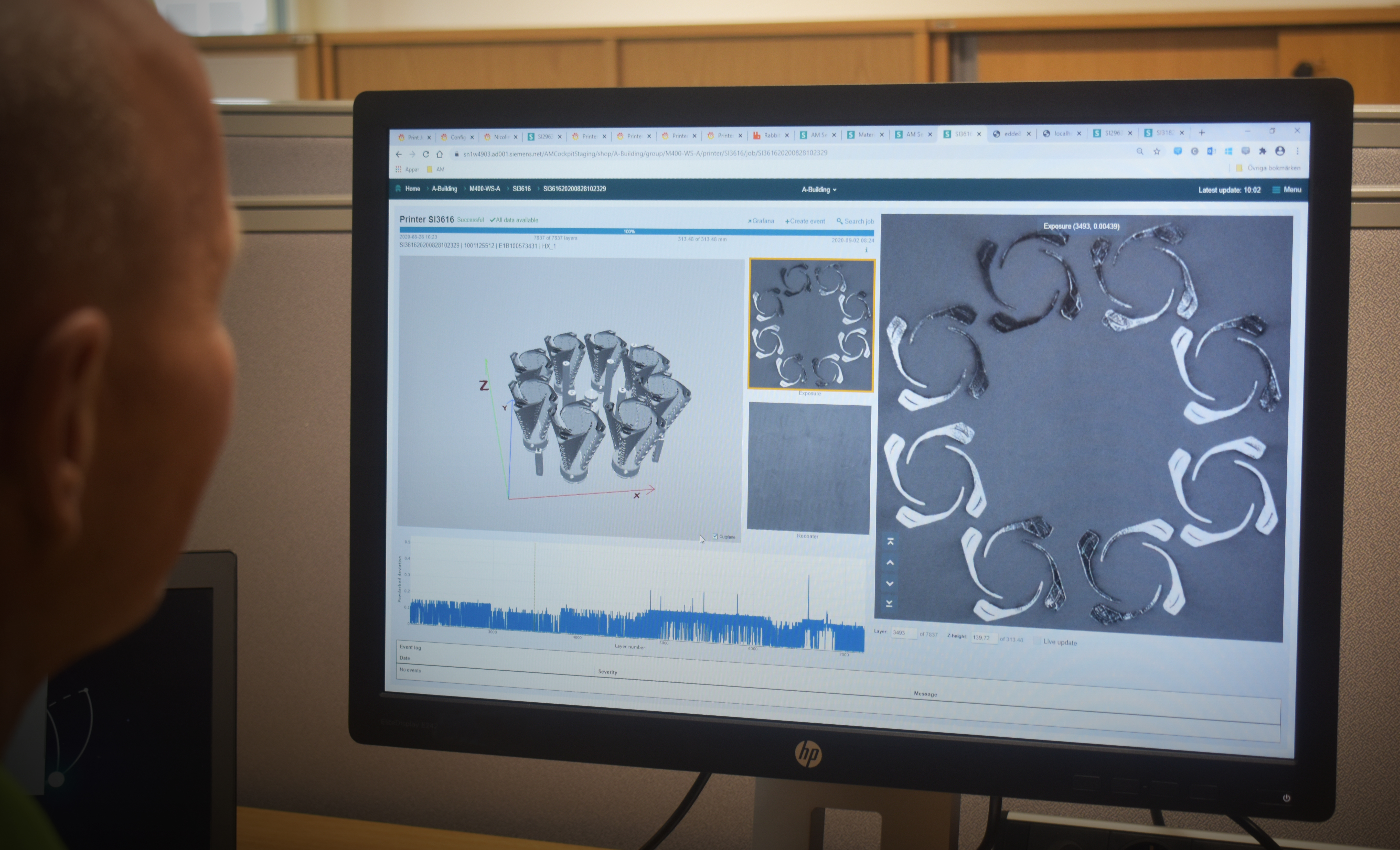
Siemens Energy’s AM workshop at its industrial plant in Finspång, Sweden, was the first facility in Sweden—and within Siemens—for global development, manufacture and repair of metal components using AM technology, which is commonly known as 3D printing. (Source: Siemens Energy)
[Editor's note: This article originally appeared in the October issue of E&P Plus. Subscribe to the digital publication here.]
Additive manufacturing (AM) involves the technologies that build 3D objects by adding layer upon layer of material (e.g., plastic, metal or concrete), and the process involves making objects from 3D model data.
In this exclusive Q&A with E&P Plus, Andreas Graichen, group manager for digitalization and industrialization of additive manufacturing with Siemens Energy, discusses the Siemens AM Monitor—a 2020 Offshore Technology Conference Spotlight on New Technology award winner.
E&P Plus: What is the Siemens Energy AM Monitor?

Graichen: Thanks to the development teams in Munich and Finspång, the Siemens Energy AM Monitor was created to answer the industry need to quickly identify defects in the powder beds used in the AM process, known more commonly as 3D printing. The quality of the powder beds, and indirectly, the components produced by AM, is critical but has been inconsistent. This is particularly true of components with complex geometries.
The AM Monitor is artificial intelligence [AI]-enabled technology that provides a fast, impartial and precise assessment of the quality of a powder bed in the selective laser melting process and gives an indication of the quality of the 3D printed part. In just seconds, the AM Monitor reviews the thousands of digital photos taken as the 3D-printed parts are made, layer by layer, to identify deposition flaws. We jokingly refer to this technology as ‘poor man’s computer tomography.’
We built the tool to compare a real powder layer against an ideal, perfect ‘master layer’—a photo of a high-quality deposition job. Each layer is assigned a severity score between 0 and 1, which is an assessment of the probability of an issue. A value closer to one means a higher risk of a quality problem. If the severity score falls outside preset quality limits, then the part is either scrapped, repaired or deemed fit for use as is. This provides a fast and precise assessment of the part’s quality—well before it is sent to the field.
E&P Plus: How is it different from other options available?
Graichen: The standard practice for evaluating part quality calls for a human inspector to carefully evaluate the pictures of each layer and look for defects. Not surprisingly, this is a time-consuming and tedious practice that produces questionable results due to human error and fatigue.
Compared to the human eye, AM Monitor’s use of AI delivers far greater precision and speed while assessing print quality. A photo-by-photo evaluation that might take a human worker a day or more is completed in seconds [with AM Monitor].
Also, the severity score, which can be considered a digital fingerprint of each print job, is an artificial but reliable overall quality indicator of the process quality. This feature is only available with the Siemens Energy AM Monitor.
Once the visual inspection using the Siemens Energy AM Monitor has become standard practice in the oil and gas industry, other nondestructive testing methods like surface crack detection, X-ray or ultrasonic testing might be phased out for cost reasons.

E&P Plus: With the current focus on doing more with less and making advances on operations with new technologies, what role does the AM Monitor perform?
Graichen: There is certainly a push for higher speed and certainty in oilfield processes, and manufacturing is no exception. With AM Monitor’s automated quality assurance [QA] based on cloud-based analytics, we believe that this tool will give operators greater confidence to use 3D-printed parts in more applications. In fact, we’re already using the AM Monitor in our AM workshop in Finspång, Sweden, where we’ve connected more than 10 AM machines. It’s also being scheduled for our Berlin, Germany, facility.
We also expect that as confidence in AM quality grows, equipment manufacturers and operators will build more geometrically complex parts, including thin-walled tubing and lattice structures, with AM.
Components like these have proven impossible or too expensive for conventional manufacturing techniques.
E&P Plus: What do you see as the next area of progress in the digital monitoring space?
Graichen: We predict that as AM Monitor keeps bringing structured QA to AM, a demand for ‘printing on location’ services will open up. AM could be used to reliably and efficiently make a range of niche, bespoke devices when and where they are needed. This promises to streamline the supply chain—shortening delivery times and lowering transportation costs—by manufacturing and evaluating high-quality spare parts at the well site. In the industry, this concept is called digital warehousing.

E&P Plus: Is there anything else you’d like to share about this technology or future projects related to the AM Monitor?
Graichen: AM Monitor brings Siemens Energy closer to our goal of making 3D printing on metal as seamless and effortless as printing on paper. Today we are focusing AM Monitor on recoating quality. In the future, we will see further technical development where thermal reflection, meltpool behavior, acoustic responses and other metrics might be considered—allowing quality issues to be prevented with much higher confidence.
Ultimately, AM will likely become a more popular manufacturing method as systems like the Siemens Energy AM Monitor confirm the quality of the delivered components, backed by a well-documented analysis that is free of human error.
Recommended Reading
Aethon: Haynesville E&Ps Hesitate to Drill Without Sustained $5 NatGas Prices
2025-03-12 - Operators are looking to the Haynesville to fill rising natural gas demand for U.S. LNG exports. Haynesville E&P Aethon Energy says producers need sustained higher prices to step up drilling.
Improving Gas Macro Heightens M&A Interest in Haynesville, Midcon
2025-03-24 - Buyer interest for Haynesville gas inventory is strong, according to Jefferies and Stephens M&A experts. But with little running room left in the Haynesville, buyers are searching other gassy basins.
Haynesville Horsepower: Rigs Needed to Crest the Coming ‘Wall of Demand’
2025-04-01 - How many drilling rigs are needed in the Haynesville Shale to meet growing natural gas demand for LNG exports? Keybanc ran the numbers.
Operators Look to the Haynesville on Forecasts for Another 30 Bcf/d in NatGas Demand
2025-03-01 - Futures are up, but extra Haynesville Bcfs are being kept in the ground for now, while operators wait to see the Henry Hub prices. A more than $3.50 strip is required, and as much as $5 is preferred.
Antero Stock Up 90% YoY as NatGas, NGL Markets Improve
2025-02-14 - As the outlook for U.S. natural gas improves, investors are hot on gas-weighted stocks—in particular, Appalachia’s Antero Resources.
Comments
Add new comment
This conversation is moderated according to Hart Energy community rules. Please read the rules before joining the discussion. If you’re experiencing any technical problems, please contact our customer care team.





